What’s Up: July 2023 Skywatching Tips from NASA
| Credit | NASA/JPL-Caltech |
|---|---|
| Language |
|
TRANSCRIPT
What's Up for August? See Saturn at dusk and dawn, the Perseid meteors return, and a "super blue moon."
In August, we've lost Venus and Mars from the evening sky, but we'll have great views of Saturn all night. Saturn reaches opposition this month, meaning it's directly opposite the Sun as seen from Earth. Planets at opposition rise just after sunset and are visible until dawn, and it's when they appear at their biggest and brightest for the year. Look for the giant planet low in the eastern sky around 9pm by mid-month, appearing a bit higher each evening as August continues.
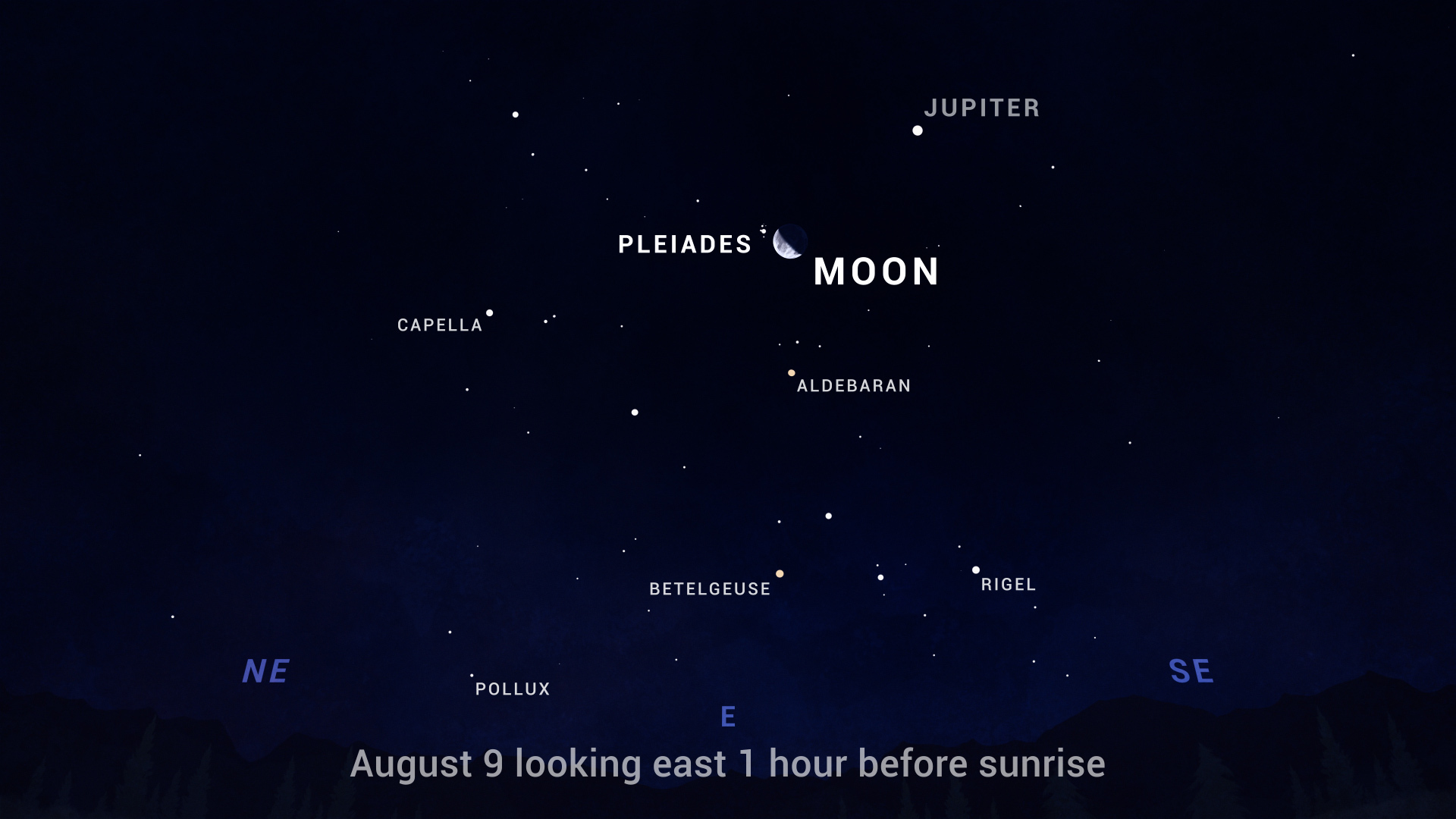
On the morning of August 3rd, Saturn appears just a couple of finger widths apart from the nearly full Moon. Find them in the west before sunrise. The Moon then makes a nice pairing with the Pleiades star cluster on the morning of the 9th, with Jupiter hanging nearby. And then the Moon has a super-close meetup with the reddish star Antares – brightest star in the constellation Scorpius – on the evening of August 24th.
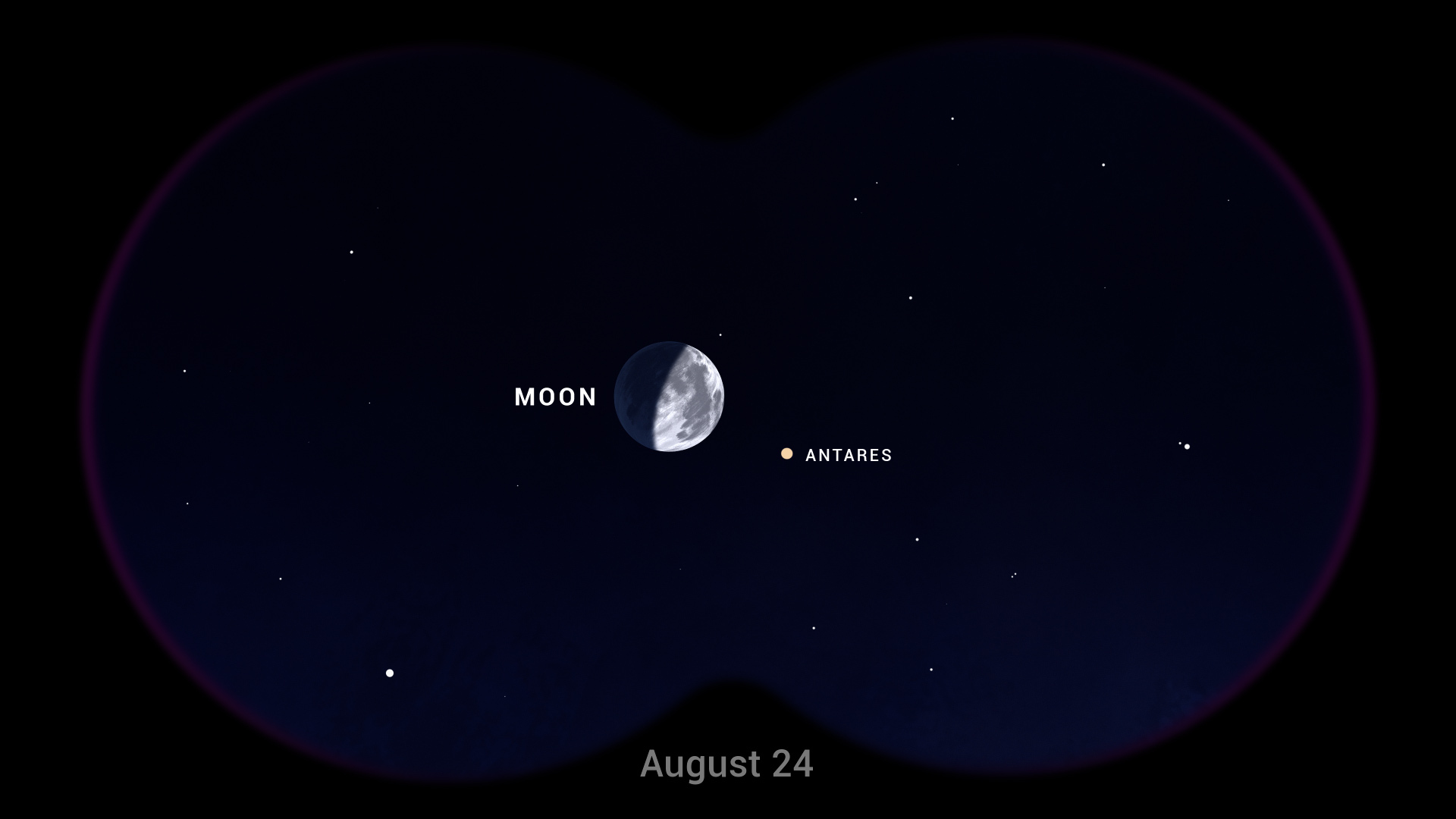
August brings one of the best known annual meteor showers, the Perseids. And this year the stage is set for a good show, as the peak night – August 12th and into the 13th – is near the new moon. The meteors are bits of dust – most no larger than sand grains – that originate from comet Swift-Tuttle. Earth sweeps through the comet's debris trail every year about this same time, resulting in the annual shower.
The radiant – the point in the sky where the meteors appear to originate – is toward the northeast, appearing in-between the upside down "W" of constellation Cassiopeia and bright star Capella. Observing the Perseids is easy – just find yourself a safe, dark spot to lie down with your feet pointing roughly toward the northeast, and look straight up. The best time to view them is between midnight and dawn, as the radiant rises higher in the sky. Meteor activity likely will be at its greatest in the hour preceding dawn.
Now, the crescent moon also rises in the couple of hours before dawn, but it's only about 7% illuminated, and so it shouldn't pose a significant problem for viewing the meteors. You might also see a few meteors in the early morning hours during the week before and after the peak.
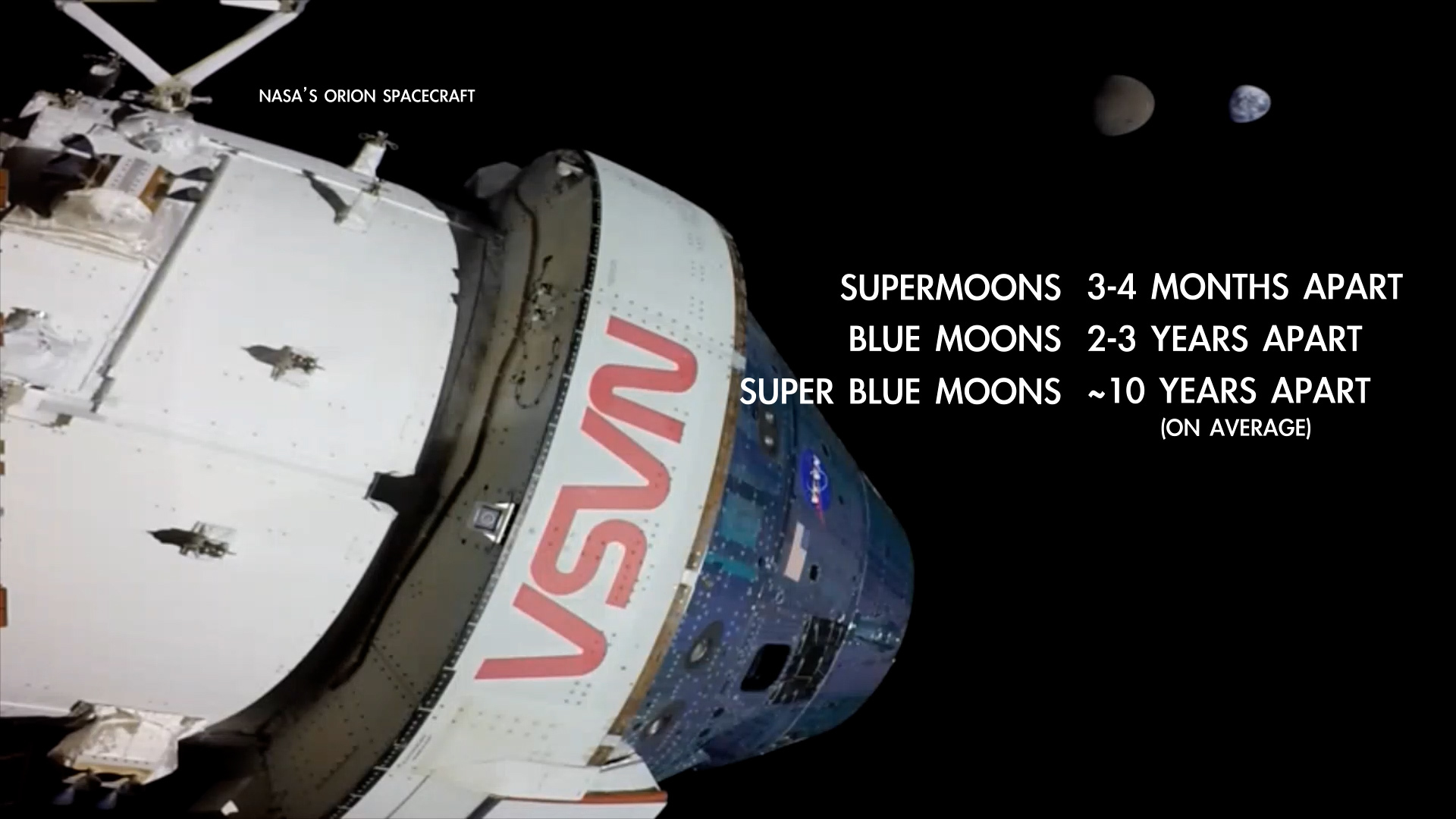
August begins and ends with a full moon, making for a special occurrence that only happens every couple of years. You see, a second full moon in a single calendar month is commonly called a "blue moon." They happen every 2 to 3 years because the Moon's monthly cycle is just a bit shorter than the average length of a month. So eventually a full moon will happen at the beginning of a month, with enough days left for a complete lunar cycle. When that happens, we get a blue moon.
But there's more! The August 30th blue moon is also a supermoon. The moon's orbit isn't a perfect circle, so sometimes it's a little farther away from Earth and sometimes closer. At its closest point, called perigee, it's 14% closer than at its farthest. About 3 to 4 times a year, the full moon phase happens to coincide with the Moon reaching perigee, and we call that event a supermoon. While it technically appears a little bit bigger (and a tad brighter) than the average full moon, the difference is not super noticeable to the eye.
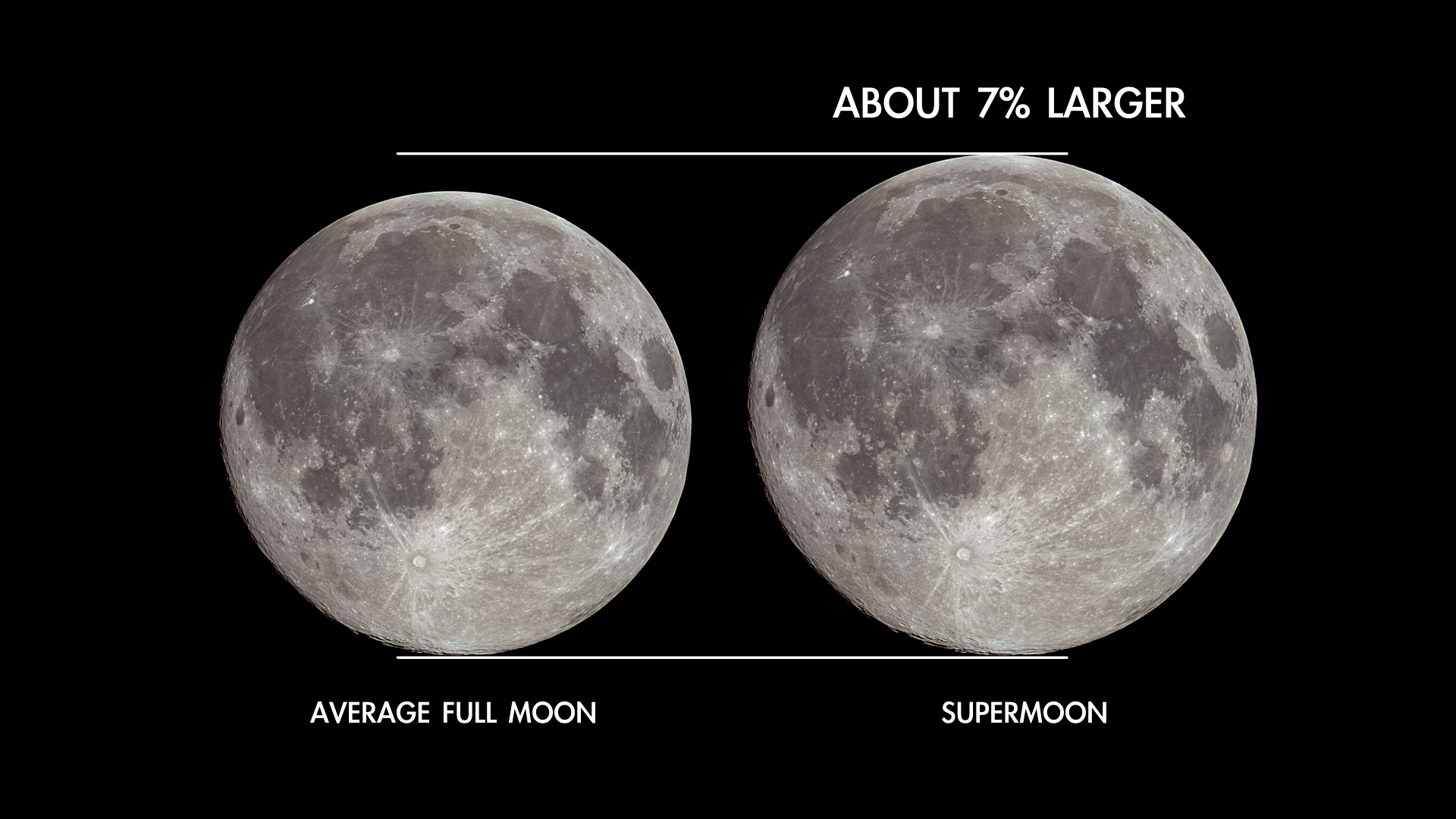
The combination of these two special full moons, making for a "super blue moon," occurs about every 10 years, on average – though the time between any two occurrences can vary from two months to two decades or more.
So enjoy this month's two full moons. And while the second one won't appear super-sized, or any bluer than usual, now you know what makes it special.
Here are the phases of the Moon for August.
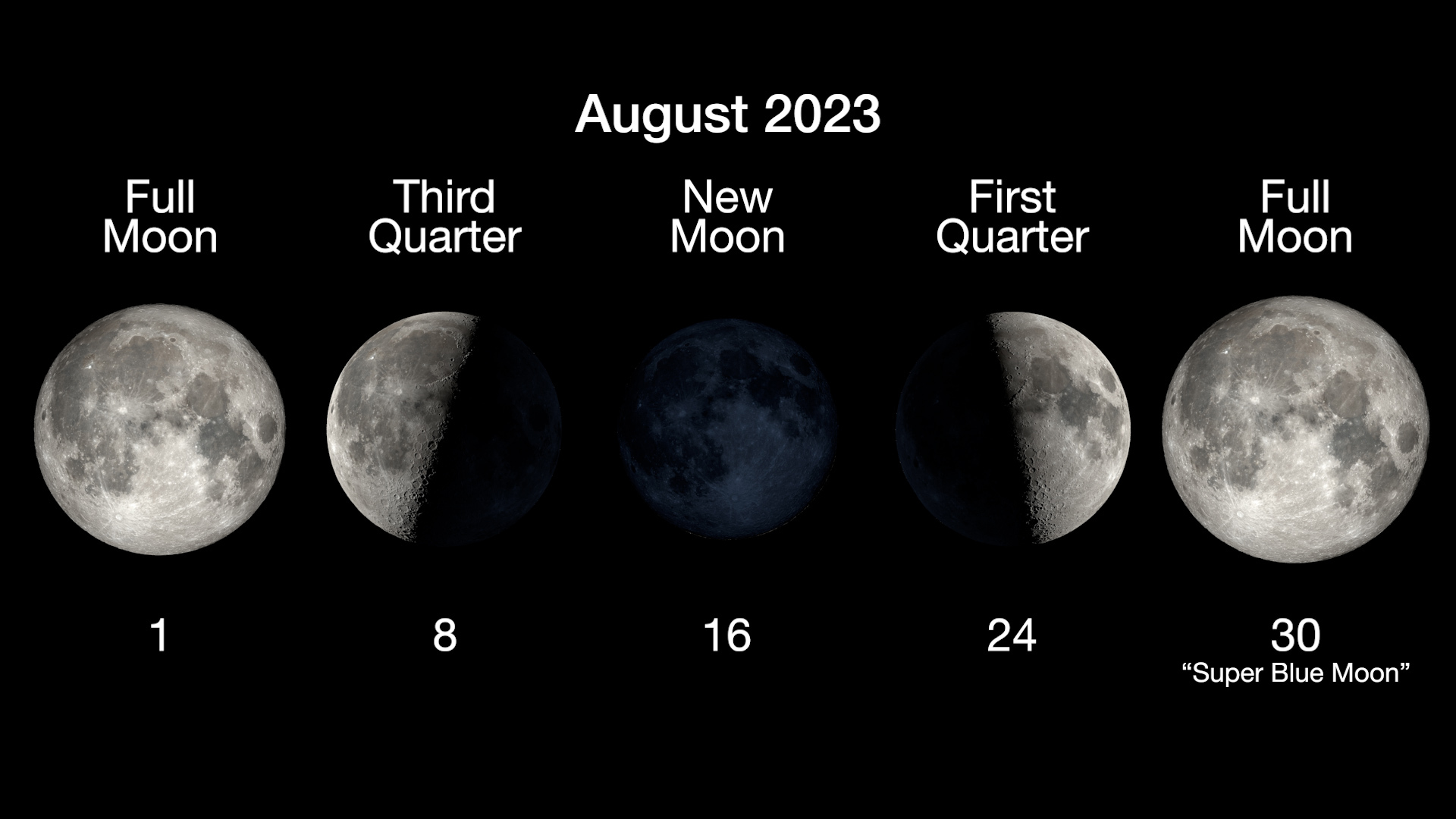
Stay up to date with all of NASA's missions to explore the solar system and beyond at nasa.gov. I'm Preston Dyches from NASA's Jet Propulsion Laboratory, and that's What's Up for this month.
